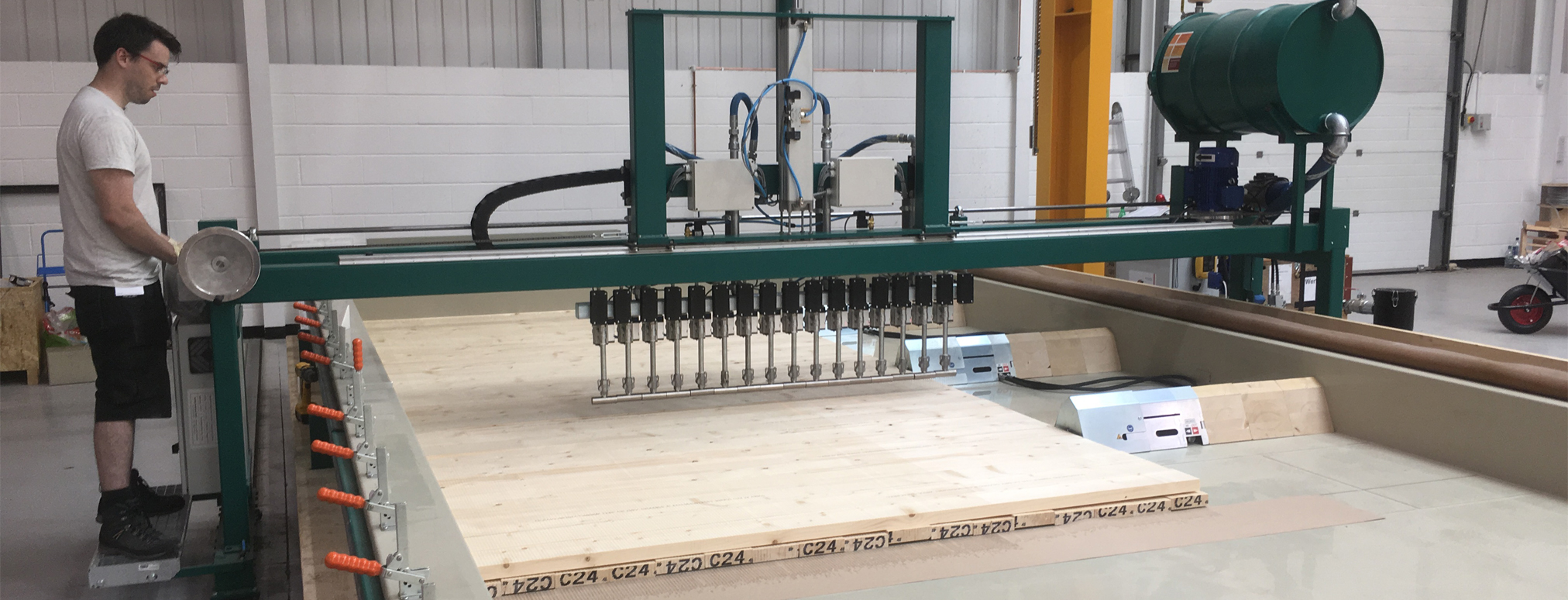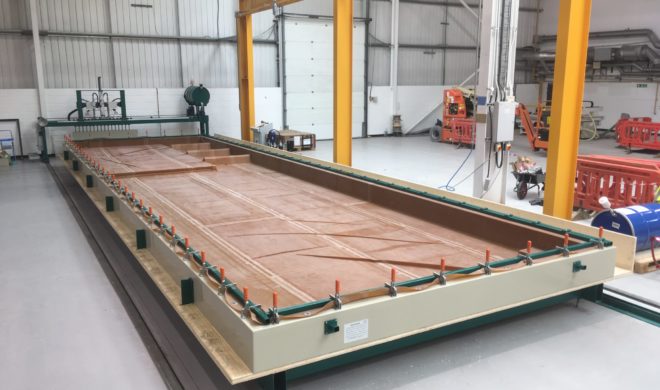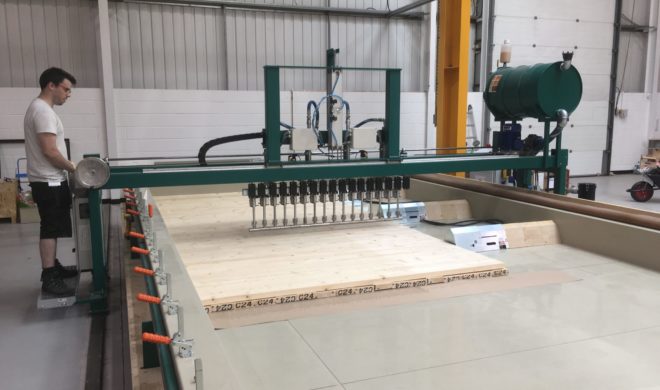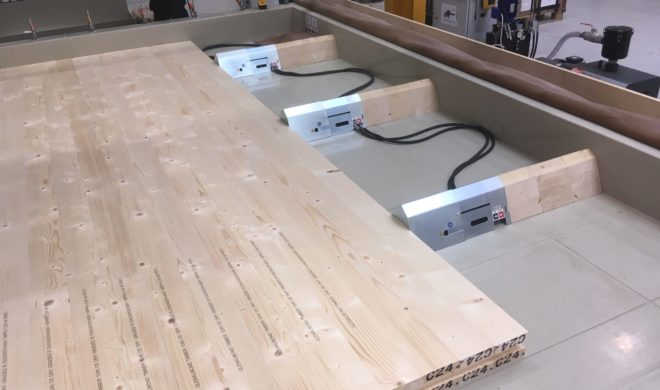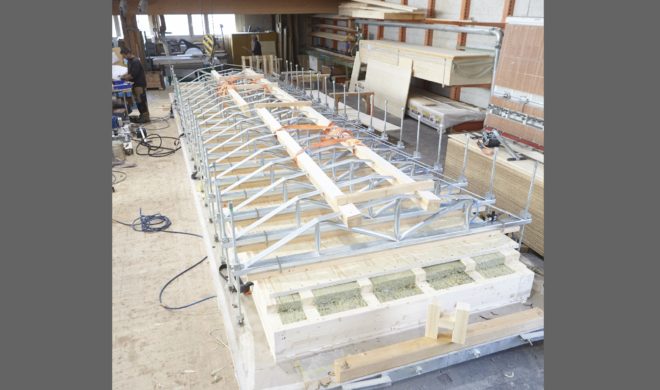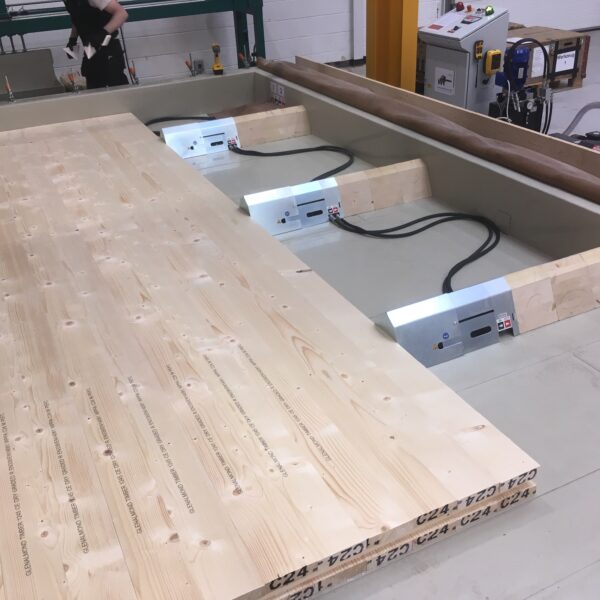Make your own CLT
Woodtec Fankhauser GmbH from Switzerland produces element construction tables and vacuum presses for woodworking and wood industry. Such presses could be an alternative to prefabricated elements for small and medium-sized companies in order to produce the cross laminated timber themselves.
Dach + Holzbau, Ausgabe 01 2018
Automatic Google-Translation from the German Original:
dach + holzbau: Last year you supplied vacuum presses for the production of cross laminated timber (CLT) to smaller companies such as the Construction Scotland Innovation Center in Scotland, why?
Last year we even delivered over 50 percent of our vacuum presses to small and medium-sized companies. The aim of the innovation center in Scotland is to provide companies with assistance in implementing their own ideas. That goes through tests and inspections up to your own production line. The vacuum presses are extremely flexible and can be used for the production of various types of wood panels – i.e. CLT, SIP panels, box elements, sandwich elements – and integrated into systems.
Another very important advantage is the low investment price of vacuum presses, which should enable start-up companies and small and medium-sized companies to launch their own products without great risk.
Cross laminated timber can also be produced on other presses, why vacuum presses?
In addition to the low investment costs, the vacuum press offers the possibility of producing panels to customer size. Even panels of different widths can be produced next to or on top of one another in one pressing process. This saves around 20 to 30 percent of the raw material that would otherwise be wasted.
As an additional benefit you describe that vacuum presses can also be used for large sizes from 3 m width. How does it work and where are the limits?
This is possible because vacuum presses use a different physical principle. In mechanical presses, the load does not increase linearly with increasing width, but exponentially, which is why these are often limited to small widths. For just a little more width, such presses have to be dimensioned much more solidly. This is not the case with a vacuum, since there no mechanical forces (one-dimensional), but atmospheric pressure (three-dimensional) are used. Whether the vacuum press is three, four or even five meters wide, it hardly needs to be made more stable. This is very clearly reflected in the price.
How do you assess the trend: will companies produce their cross laminated timber themselves and then process it?
In any case. The exploding number of large-scale projects absorbs large parts of the production of the large cross-laminated timber producers and often leaves them little time to supply smaller companies with orders, on time and in the desired quality. Smaller and larger construction companies in particular can overcome these problems with their own vacuum press and save 30 to 50 percent compared to buying them.
What other advantages do you see?
The flexibility and the low investment costs of vacuum presses are the great advantages. We are also constantly working on new functions and additional devices so that our customers can produce BPS even more efficiently.
Make your own CLT
Thus they can increase performance?
Yes, we are working with various customers to gradually expand the capacity of existing systems. From this we have worked out a purchase model in several stages, where you enter with little risk and maybe produce 2,000 to 3,000 m3 per year, but which can be expanded to 20 to 30,000 m3 through appropriate automation with increasing demand on the market.
Producing cross laminated timber also means using a lot of raw materials. Are there any alternatives that can be produced on your presses?
Yes, we have some customers who are increasingly relying on box elements and ribbed ceilings. In these, a beam structure is glued on one or both sides with three-layer, CLT or other wood-based panels. Some of these are structurally even better than pure cross-laminated timber and save a lot of raw material. Alternatively, we offer a pneumatic press solution for timber construction companies that can be integrated on our element construction table. This means that no additional system has to be purchased. You can produce both timber frame and box elements with the pneumatic press.
You previously called the SIP, the Structurally Insulated Panels, what is that?
Yes, these so-called SIP or other similar sandwich elements are another product where the insulation contributes to the stability of the panel. These are very well known in the construction industry and are also widely used, but they can only be obtained ex works in very small widths up to a maximum of 1.25 m. With a vacuum press, our customers produce a whole wall up to 3.5 m high from one piece and can also vary insulation thicknesses depending on the order and add additional designs such as load-bearing ribs or webs.
